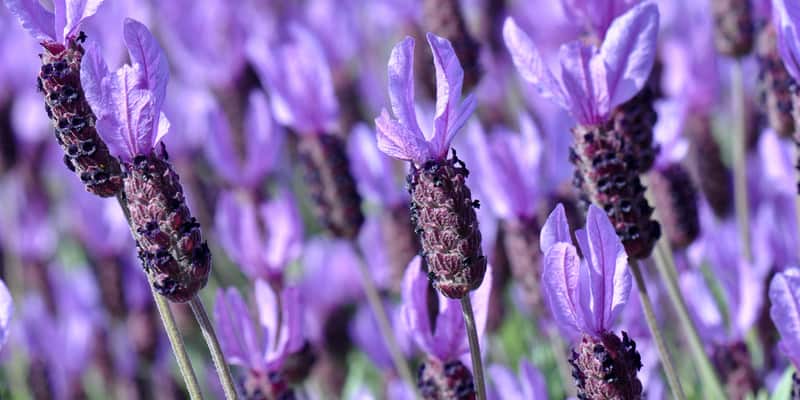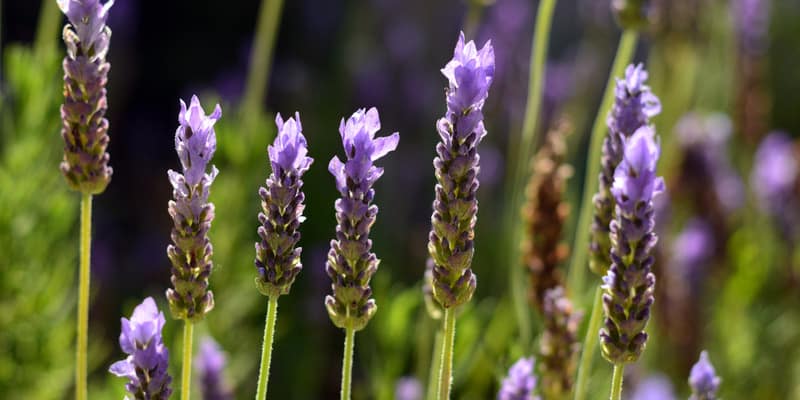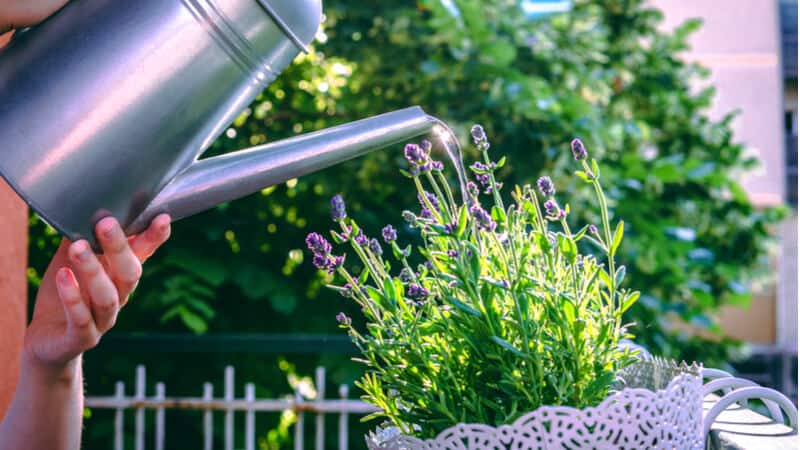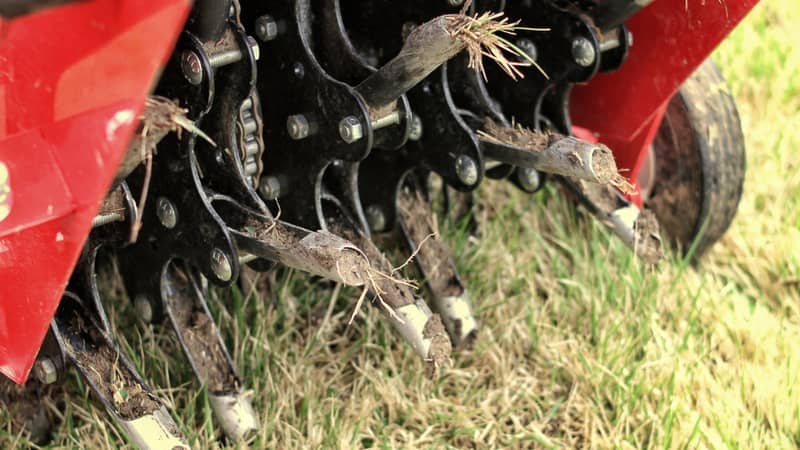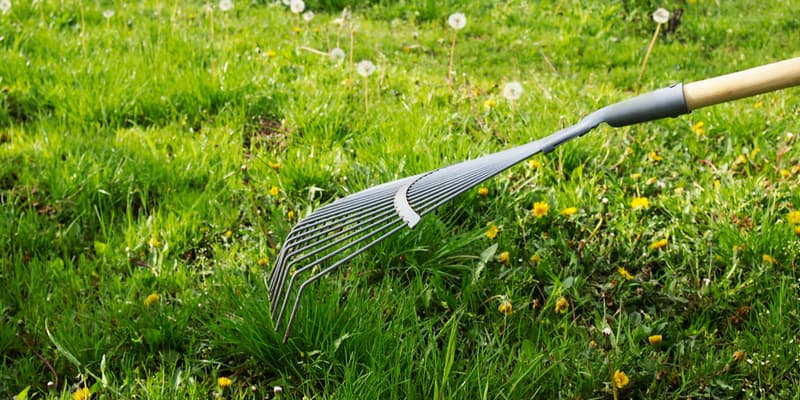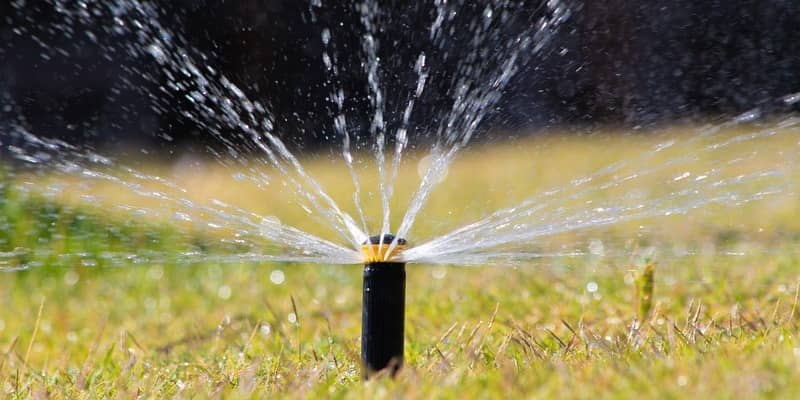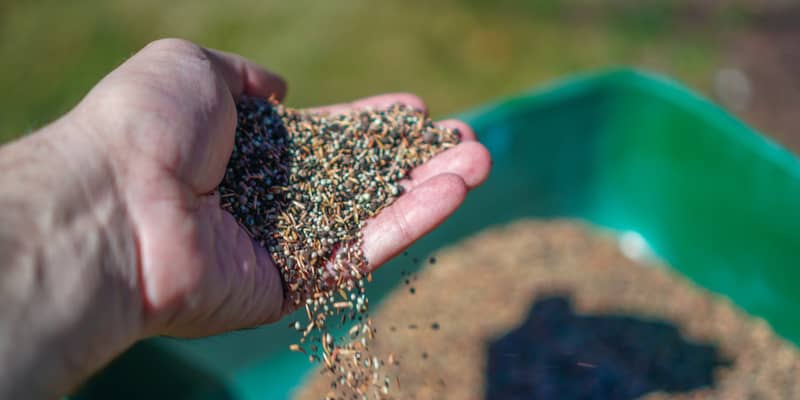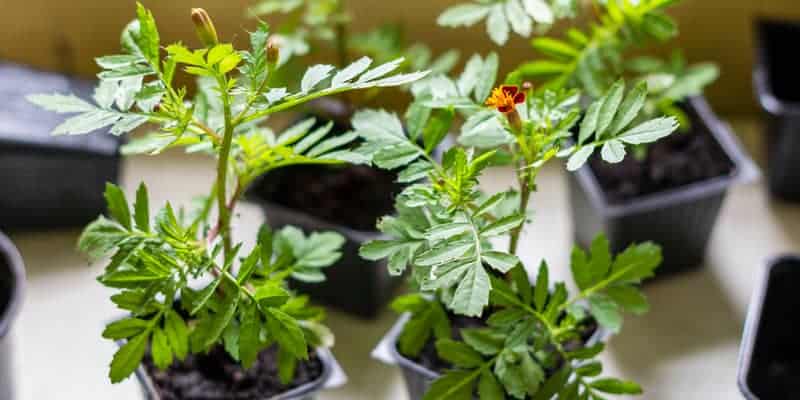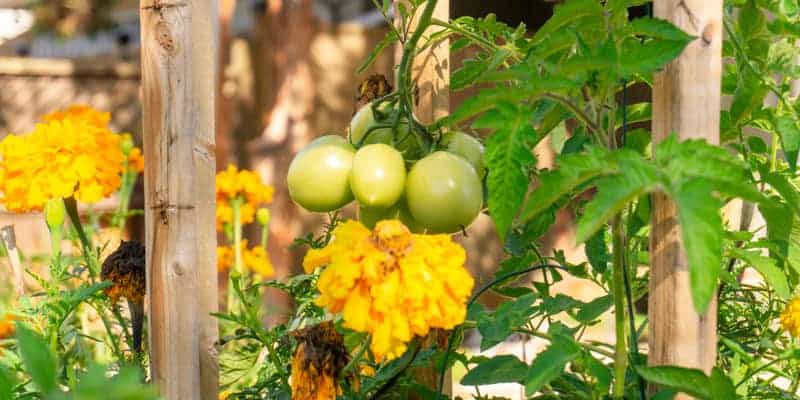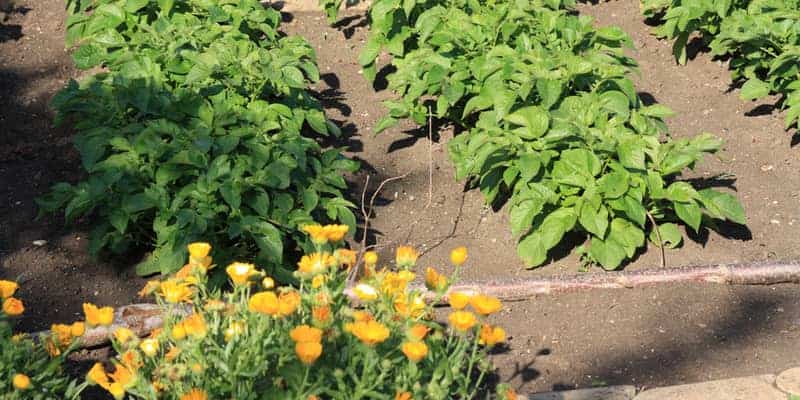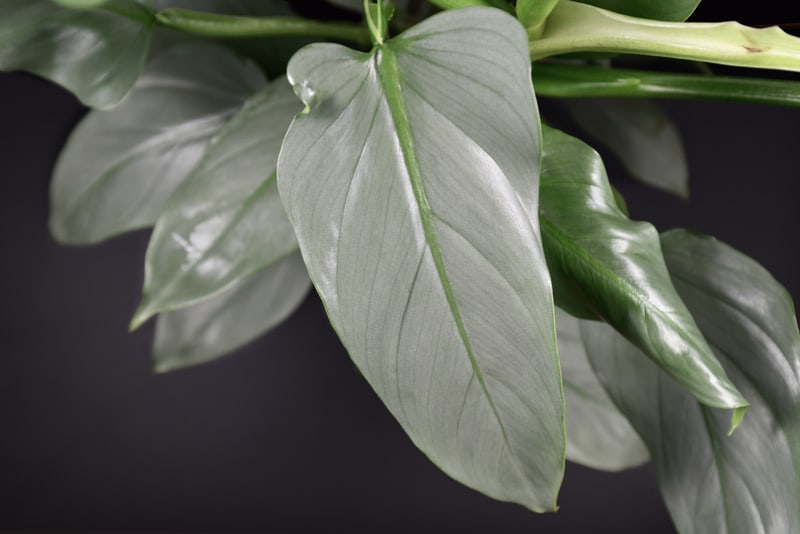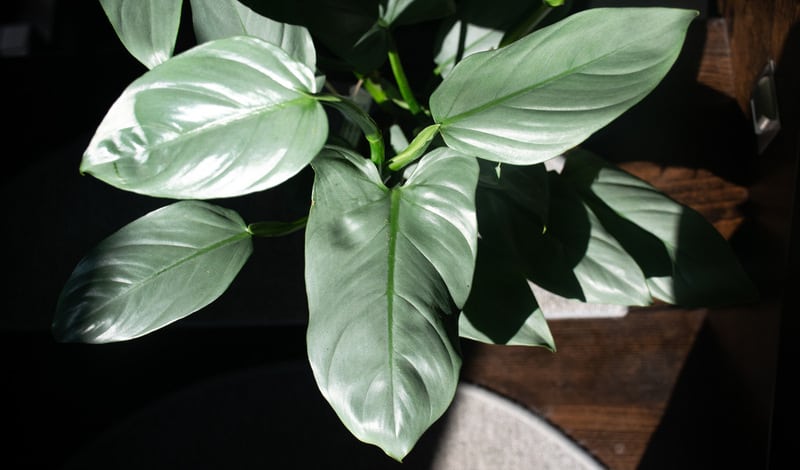Growing potatoes at home is a great way to have a never-ending supply of fresh potatoes. They are versatile vegetables that can be used in many ways, from mashed potato, to roasted potato, to fried potato chips.
The best thing about growing your own potatoes is that you know exactly what has gone into them, so you can be sure they are free from harmful pesticides and chemicals. If you want to learn how to grow potatoes in Australia, then read on for some tips.
Types of Potatoes in Australia
Few vegetables are as versatile or delicious as the humble potato. But with so many Australian potato varieties to choose from, it can be a challenge to know which to grow. The following are the three main types of potatoes grown in Australia:
1. Waxy Potatoes
Waxy potatoes have a lower starch content and are good for salads and steaming. These potatoes have a smooth, velvety texture.
Desiree Potatoes

Named after Napoleon’s Empress Josephine de Beauharnais, Desiree potatoes are one of the most popular varieties grown in Australia. Desiree potatoes have light red skin with creamy white flesh and a slightly floury texture, making them ideal for mashing, baking, roasting, and chips.
Dutch Cream Potatoes
Dutch Cream potatoes are one of the oldest varieties grown in Australia and were first brought over by European settlers in the 19th century. They have creamy yellow flesh with a distinctively nutty flavour and a smooth, waxy texture that makes them perfect for boiling, roasting, or steaming.
Nicola Potatoes

Nicola potatoes are a recent addition to the Australian potato scene, having only been introduced in 2003. They have a nutty flavour and a delicate, waxy texture that makes them ideal for boiling or steaming whole and serving with butter or sour cream.
2. Starchy Potatoes
Starchy potatoes have a higher starch content and are good for baking, mashing, and frying.
Russet Burbank Potatoes
One of the most popular potato varieties in Australia, Russet Burbank potatoes are perfect for baking, roasting or frying. They have light brown skin and firm flesh that breaks down when cooked, making them ideal for mashed potatoes.
Red Pontiac Potatoes
Red Pontiac potatoes are oval-shaped with red skin and white flesh. They’re relatively small and have a slightly waxy texture. When boiled, red Pontiac potatoes keep their shape and have a nice, firm texture that makes them perfect for salads or potato salad recipes.
King Edward Potatoes

Named after King Edward VII, who was the King of England at the time they were developed. These potatoes are red-skinned with white flesh. They have a firm texture and a slightly sweet flavour and are often used for boiled or mashed potatoes.
3. All-Purpose Potatoes
All-purpose potatoes are somewhere in between waxy and starchy potatoes and can be used for most cooking methods. They have a medium starch content, which means they’ll keep their shape when boiled or roasted but will also mash well.
Royal Blue Potatoes

As their name suggests, Royal Blue potatoes have deep blue skins with starchy white flesh. They’re a waxy variety of potato that is often used in salads or boiled and served whole with butter.
Sebago Potatoes
Sebago potatoes are large spuds with light brown skin and white flesh. They’re good all-rounders that can be used for any type of cooking, but they’re particularly good roasted or baked.
Yukon Gold Potatoes
Yukon Gold potatoes are an American import that’s become extremely popular Down Under thanks to their delicious buttery flavour and smooth texture. Yukon Golds have golden skin with yellow flesh and are perfect for mashing or roasting.
How Long Do Potatoes Take to Grow?
Potato plants take between 90 and 120 days to mature. But this can vary depending on the type of potato and the growing conditions. For example, early varieties of potatoes may be ready to harvest in as little as 60 days, while late varieties can take up to 150 days. In addition, potatoes grown in cooler climates may take longer to mature than those grown in warmer climates.
When to Plant Potatoes

Potatoes need a cool climate to thrive. In Australia, potatoes are usually planted in late spring or early summer, when the weather is warm and there is little risk of frost.
If you live in an area with a tropical climate, it’s best to choose a potato variety that is tolerant of high temperatures. For example, cool climate varieties like Royal Red-skinned waxy potatoes are best suited for growing in Tasmania’s cooler climate. On the other hand, tropical climate varieties like Desiree red-skinned potatoes are best suited for growing in Queensland’s warmer climate.
How to Plant Potatoes
Seed Potatoes vs Potato Seeds
When it comes to planting potatoes, you have two options: potato seeds or seed potatoes. Seed potatoes are the tubers or shoots you see growing out of potatoes. Potato seeds are the small, undeveloped potato eyes you can find on a whole potato.
While there are some pros to potato seeds:
- Potato seeds are much cheaper than seed potatoes.
- Potato seeds take up less space than seed potatoes and are more efficient to store.
- Potato seeds germinate faster than seed potatoes, which means you can get a head start on the growing season.
There are also a few drawbacks to planting them. For one thing, they are more challenging to plant than seed potatoes. Additionally, they have a lower survival rate, so you may need to plant more seeds than you would if you were using seed potatoes. Ultimately, the best option for you will depend on your budget, space constraints, and level of experience.
How to Grow Potatoes Outdoors

What You’ll Need
To get started, you’ll need the following:
- Seed potatoes or potato seeds
- Hand trowel or spade
- Compost or manure
- Container for growing potato seeds
- A sunny spot in your garden
Step 1: Check the Last Frost Date
You should plant your seed potatoes about two weeks before the last frost date in your area. If you are unsure when this is, you can check with your local nursery or gardening store.
Step 2: Prepare the Soil for Planting
Potatoes need well-drained soil that is rich in organic matter. So, it is important to add compost or manure to the soil before planting. The ideal pH level for growing potatoes is between 6 and 7. So, you may need to add some lime to the soil if it is too acidic. When preparing the soil, it is also necessary to ensure that it is free from stones, as these can damage the roots of the potato plants.
Step 3: Plant Your Seeds
To plant your seed potatoes, dig holes that are about 10cm deep and 15cm apart. Place one seed potato into each hole and then cover them with 5cm of soil.
Step 4: Water Regularly

Potatoes need to be kept moist but not waterlogged. I recommend watering them once a week during the growing season. Be sure to give them a good soaking so that the water penetrates down to the roots. Mulch around the plants with hay or straw to help keep the moisture in and reduce evaporation.
Step 5: Thin Your Sprouts
After about two weeks, you should see shoots starting to appear above ground level — these are called ‘sprouts’ or ‘eyes’. Once sprouts appear, thin out each plant so that there is only one main shoot per plant remaining. Thinning out allows each plant enough room to grow without competing with other plants for nutrients and space.
Step 6: Feed Your Potato Plants
About six weeks after planting, your potato plants will start to flower. At this point, you should start feeding them with a high-potassium fertiliser (tomato feed is ideal). Apply according to the supplier’s instructions and stop feeding once the flowers have started to fade.
Step 7: Harvest Your Potatoes

You can start harvesting potatoes when the leaves start to turn yellow and die back. Use a garden fork to dig up your spuds, being careful not to damage any of the tubers. Once harvested, allow your potatoes to dry out in the sun for a few hours before storing them in hessian bags in a cool, dark place.
How to Grow Potatoes Indoors
While we typically think of potatoes as an outdoor crop, they can be quite easy to grow indoors. Here’s everything you need to know about indoor potato growing.
What You’ll Need
To grow potatoes indoors, you’ll need the following supplies:
- Seed potatoes or potato seeds
- Potting mix
- Compost or manure
- Hand trowel or spade
- Fertiliser
- Watering can or spray bottle
- 30-40 Litre plant pots — make sure they have drainage holes
Step 1: Select and Purchase Potato Seeds
You’ll want to select a potato variety that is well suited for indoor growth. Some good options include Yukon Golds, Russets, and Red Pontiacs. Avoid varieties that are labelled “outdoor” or “field.” Once you’ve selected your potato variety, it’s time to purchase your seed potatoes. You can find these at most garden centres or online.
Step 2: Prepare Your Potting Soil
Potatoes need nutrient-rich soil in order to thrive. If you’re using a store-bought potting mix, be sure to mix in some organic matter like compost or manure before planting. If you’re making your own potting mix, use two parts peat moss or coir fibre to one part perlite or sand. Your goal is to create a light, fluffy mixture that will drain well but still keep some moisture.
Step 3: Plant the Potato Seeds
Once your potting soil is ready, fill your plant pot to within 15cm of the rim. Sink three to five of your potato seeds into the soil and then cover them with 5cm of potting mix. Make sure to space them evenly apart.
Step 4: Keep the Soil Moist but Not Soggy

One of the most important things to remember when growing potatoes indoors is to keep the soil moist but not soggy. Too much water will cause the potatoes to rot; too little water will cause them to shrivel up and die. Aim for keeping the soil evenly moist by watering once a day — twice a day if the weather is particularly hot or dry.
Step 5: Feed and Fertilise
Your potato plants also need to be fertilised regularly — once a week should suffice. Use a diluted liquid fertiliser and apply it using a watering can or spray bottle. Be careful not to over-fertilise, as this can damage the plants.
Step 6: Wait for Them to Grow
It will take about 2-3 months for your potatoes to be ready to harvest. When they’re ready, you’ll know because the leaves will begin to turn yellow and die back. At this point, stop watering and fertilising the plants. Let them sit for another week or two before harvesting your delicious home-grown potatoes.
How to Grow Potatoes in Tyres
You don’t need a lot of space to grow your own potatoes. In fact, all you need is an old car tyre and some soil. Here’s how:
- Step 1: First, find an old tyre (or two, or three…) and clean it out. Make sure no nails or sharp objects inside could hurt your potatoes.
- Step 2: Start by filling the tyre with topsoil and compost, leaving about 10cm at the top.
- Step 3: Plant two or three potato seeds in the soil. Cover them with at least 10cm of topsoil.
- Step 4: Water the soil regularly, and don’t get tyred waiting for the potato plants to grow.
- Step 5: Once the plants are around 10cm tall, mound up more potting mix around the base of each plant. Keep doing this until the tyre is filled to the top with soil.
- Step 6: Add another tyre, and continue watering and adding soil until the tyres are full. This will give the potatoes plenty of room to grow.
- Step 7: Once your potatoes are mature (usually after about two months), they’ll be ready to harvest. Just reach into the tyre and carefully pull out any that looks big enough to eat.
When to Harvest Potatoes

The best time to harvest potatoes is after the plants have flowered and the potato skins have started to toughen. This usually occurs about 2-3 months after planting.
To check if the potatoes are ready, carefully dig up one plant and check the size and condition of the tubers. If they are small and still soft, leave them in the ground for a few more weeks. Once they have been harvested, store them in a cool, dark place until you are ready to use them.
Potato Companion Plants
Potatoes are known to support the growth of other plants, especially those in the nightshade family. Some of the best plants to grow with potatoes include tomatoes, capsicums, and eggplants. Not only will these vegetables benefit from the nutrients that potatoes provide, but they will also help to keep potato pests at bay.
Carrots
Carrots and potatoes are often planted together since they have similar growing schedules and prefer similar conditions. Plus, they make a great team in the kitchen! Try roasting them together for a delicious and healthy side dish.
Beans

Beans are another great companion plant for potatoes. They can help support the potato plants as they grow, and they also add some nitrogen to the soil, which is beneficial for both plants.
Onions
Onions and potatoes are often planted together since they tend to do well in similar conditions. They also make a delicious pairing in many recipes, so if you’re looking to add some extra flavour to your potato dishes, consider adding onions to the mix.
Cucumbers
Cucumbers are another great option for growing with potatoes. They prefer similar growing conditions and will benefit from the nutrients that potatoes provide.
Corn

Corn and potatoes make a fantastic team, as they both benefit from each other’s shade. Additionally, cornstalks can be used to support potato plants, helping to keep them from toppling over.
Peas
Peas are another excellent choice for growing with potatoes. Like beans, they add nitrogen to the soil and also help to support potato plants. Peas also have the added benefit of deterring insect pests that might otherwise damage the potato crop.
Garlic
Garlic plants share the same growing requirements as potatoes, so they can be easily managed with a single fertilisation and irrigation schedule. When planted next to potatoes, garlic can help to deter pests and improve the flavour of your spuds.
Marigolds
Marigolds release a compound called pyrethrin into the soil, which is harmful to many common garden pests such as nematodes, aphids, and whiteflies. This can help to protect potatoes from these pests, and also improve the health of the overall soil.
Common Pests and Diseases that Affect Potato Plants
Just like any other plant, potato plants can be affected by pests and diseases. In Australia, some of the most common problems include aphids, cutworms, and Colorado potato beetles.
Aphids
These tiny insects feed on plant sap and can cause stunted growth and distorted leaves. One common method to get rid of aphids is to blast them with water from a hose. Another option is to spray a homemade insecticide using dish soap and water. For persistent infestations, you may need to resort to chemical insecticides.
Colorado Potato Beetles

These black and yellow beetles feed on potato leaves, causing extensive damage, and their larvae can also bore into potato tubers. To get rid of Colorado potato beetles, you can use insecticidal soap or organic neem oil which will kill the beetles on contact. (We suggest Plant Doctor’s neem oil plant spray – use the code LAWN10 for 10% off!) You can also opt to release beneficial predators, such as ladybugs, into your garden.
Early Blight
Early blight is a fungal infection that spreads via wind and water, and it thrives in warm, humid conditions. To get rid of early blight, it is important to remove any infected leaves or stems from the plant. The affected area should then be treated with a fungicide. After treating the plant, continue to monitor it for signs of early blight.
Late Blight

Late blight is a serious disease that can devastate potato crops. The symptoms are easy to spot: dark brown or black spots on the leaves, stems, and fruit of the plant. To help prevent late blight, avoid planting potatoes in areas that have had previous outbreaks of the disease. You should also water the plants carefully to avoid getting the leaves wet, as this can allow the fungus to spread. Remove any affected leaves or plants immediately to keep the disease from spreading further.
Fusarium Wilt
Fusarium wilt is a destructive disease that can affect potatoes, tomatoes, and other plants in the nightshade family. The fungus enters the plant through the roots and then spreads through the vascular system, causing the leaves to wilt and turn brown. There are several ways to deal with fusarium wilt, but the simplest is to remove affected plants and burn them.
Potato psyllid
The potato psyllid is a small, winged insect that feeds on potato plants. While most potato psyllids are harmless, some can carry a disease called “zebra chip”, which can cause potatoes to develop dark stripes. Psyllids also produce a sticky substance called honeydew, which can encourage the growth of sooty mould on the leaves. One of the most effective methods is to remove infested leaves from the plant. Another method is to spray the plants with an insecticide.
Po-Tay-Toes, Boil ‘em, Mash ‘em, Stick ‘em In Your Garden
With a bit of effort, you can enjoy freshly harvested potatoes all year round. Just be sure to choose the right variety for your climate and feed your plants with a high-potassium fertiliser once they start flowering. And if you ever need an extra pair of hands, we have professional gardeners who can help.
The post How To Grow Potatoes In Australia appeared first on Lawn.com.au.






